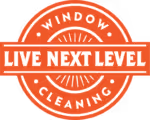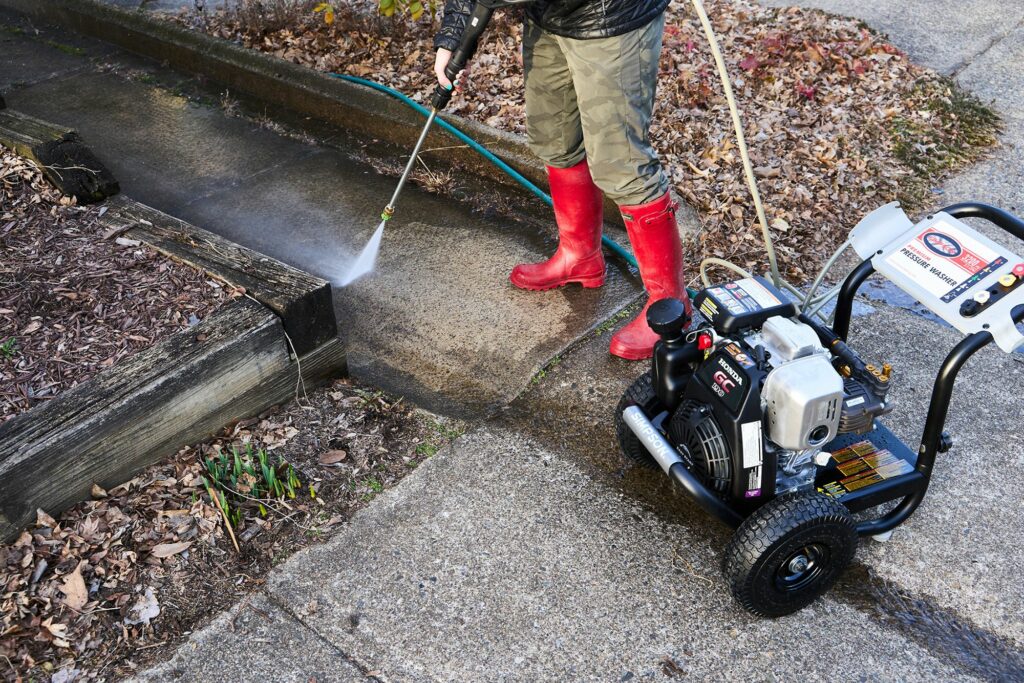Pressure washing is a highly effective and efficient method of cleaning surfaces. It is used in many outdoor cleaning applications such as driveways, patios and decks. However, without the proper knowledge and techniques, it can cause damage to the surface or property.
This article provides an overview of the top 10 pressure washing techniques for newbies. It outlines what type of pressure washer should be used for the job, how to prepare the surface before washing it, which detergents are suitable to use and how to start at a distance in order to avoid any accidental damage from occurring.
Furthermore, it explains why it is important to finish off with clean water afterwards. With these tips and techniques in mind, newbies will be able to safely and successfully pressure wash their own outdoor surfaces.
Choose the Right Pressure Washer
Choosing the right pressure washer is essential for successful pressure washing, as it determines the power of water output and ultimately affects the efficiency of cleaning.
Factors to consider before purchasing a pressure washer include flow rate, type of motor, portability, and nozzle selection.
Typically, higher flow rates will result in faster results with less effort due to increased power output.
When selecting a motor type for a pressure washer, electric motors are often more affordable than gas-powered engines but may not have enough power for some cleaning jobs.
It is important to find an appropriate balance between portability and power when looking at different models as well.
Finally, nozzle selection should be carefully considered depending on the surface being cleaned; various nozzles can provide different levels of water intensity that can be used depending on the task at hand.
Taking all these factors into account will ensure choosing the best model for any given job and getting satisfactory results from using it properly.
Prepare the Surface
Before beginning the task of pressure washing, it is essential to adequately prepare the surface by removing dirt and debris; as the saying goes, ‘A stitch in time saves nine’.
It is important to protect the surface from possible damage caused by high-pressure water jets. This can be done by covering any sensitive areas such as windows, doors or electrical outlets with protective covers and masking tape.
Regular cleaning of surfaces will help keep them free from dirt and debris that can cause clogging if not removed before use.
When using a pressure washer, it is recommended to start with a low setting and test its effect on the surface before increasing the pressure. In addition, always ensure that the nozzle is pointed away from people and property while running at a safe distance.
Care should also be taken when working on delicate objects such as vehicles or furniture; using an appropriate nozzle attachment designed for those particular surfaces can help avoid damage due to excessive force.
Pressure washing requires careful preparation in order to achieve satisfactory results without causing unnecessary harm or damage. Cleaning regularly helps maintain cleanliness and prevents dirt and debris buildup which can increase risks associated with operating a pressure washer.
Adequate protection of surfaces needs to be taken into consideration when using this equipment in order to prevent long-term consequences associated with overspray or improper usage techniques.
Use the Right Detergent
When using a pressure washer, selecting the right detergent is essential to achieving desired cleaning results. The type of detergent you use will depend on the task at hand; for example, there are different types of soaps and solutions that are specifically formulated for removing dirt from cars or wooden fences.
There are even some that can be used to remove grease or oil. It is important to read the instructions carefully when using any detergent or soap with a pressure washer as mixing ratios should be followed precisely in order to achieve maximum cleaning power without damaging the surface being cleaned.
It is also important to store all chemicals safely and according to manufacturers’ instructions as improper storage could lead to contamination or hazardous reactions if mixed incorrectly. For instance, bleach must always be stored away from other cleaners and solvents due its extreme reactivity when in contact with other chemicals.
Furthermore, most pressurized water cleaning products require special disposal methods in order to ensure they do not enter into our water systems, so it is important to check local regulations before disposing of them.
By taking the time to select the correct detergent and following safety protocols when storing and disposing of chemicals, newbies can increase their chances for success with a pressure washer while ensuring their safety and protecting our environment.
Start at a Distance
Starting from a suitable distance away is an important part of properly using a pressure washer. When first beginning to use the appliance, it is best to start at a distance of 8-10 feet away from the surface that needs to be cleaned. As one becomes more experienced with using the pressure washer, they can adjust this distance accordingly and get closer when needed. A few adjustments may also need to be made in order for the pressure washer sprayer to match the correct cleaning needs for that particular area.
| Pros | Cons |
|——|——–|
| Safety precaution | Too far could lessen effectiveness |
| Allows user time to adjust settings | Can cause wasted time if too distant |
| Quickly clean larger areas quickly | Limited range on certain machines |
It is always important to check the specifications of your machine before beginning any project, as some models are limited in their reach and power output capabilities. Additionally, it is essential for safety reasons that operators ensure all bystanders are kept at least 10 feet away from where the pressure washer is in use. This helps prevent injury due to possible contact with high-pressure water streams or splashes of hot water and detergent solution.
When using a pressure washer, users should begin by safely approaching the cleaning area while keeping their distance and making necessary adjustments before starting work. By doing so, they can maximize efficiency and safety while ensuring optimal results during their cleaning session.
Rinse with Clean Water
Finally, it is important to rinse the surface with clean water after pressure washing. This will help ensure that all residual dirt and debris from the pressure washing process is removed.
In order to do this effectively, it is recommended that the user keep a regular cleaning schedule and wear proper protection. Cleaning regularly will help prevent any buildup of dirt or grime on the surface which can cause damage over time. Wearing the appropriate protective gear such as gloves and safety glasses will also help protect against any potential hazards associated with using high-pressure water jets.
Rinsing with clean water after pressure washing can help reduce the risk of damage to both surfaces and surrounding areas by removing any residual dirt or debris left behind from working at close range. Additionally, rinsing can help restore a brighter finish to painted surfaces if done properly. It is important to know how much force should be used for each task in order to avoid damaging delicate surfaces while still achieving adequate cleaning results.
Understanding when and how often it is necessary to use clean water for rinsing after pressure washing tasks will ensure good results without risking harm or damage to either yourself or your property. Properly protecting oneself with safety gear and keeping a consistent cleaning routine are essential components of successful pressure washing projects regardless of experience level or skill set.
Conclusion
Satire can be a powerful tool when it comes to pressure washing. It can help newbies become more knowledgeable about techniques and make the job easier.
The right pressure washer, proper preparation of the surface, use of appropriate detergent and starting at a distance are all essential components for successful pressure washing.
Furthermore, rinsing with clean water is necessary to prevent damage to surfaces.
By utilizing these helpful tips and tricks, even novice washers can achieve professional results without fear or frustration.
With these guidelines in hand, anyone can become an expert in no time!




